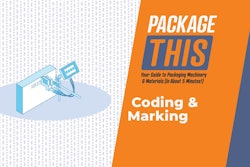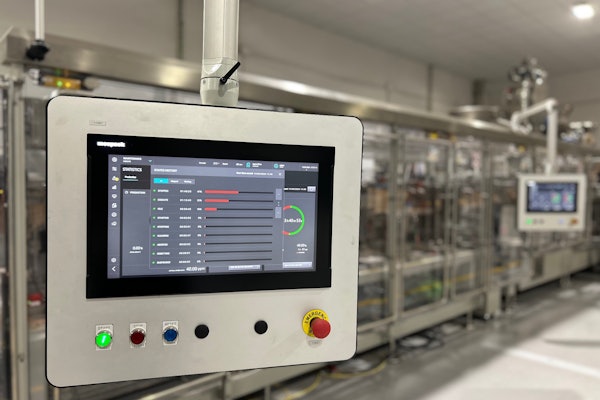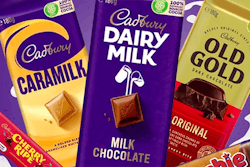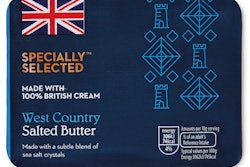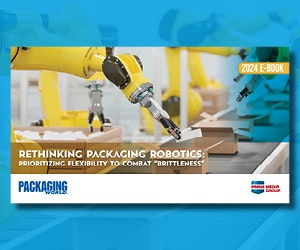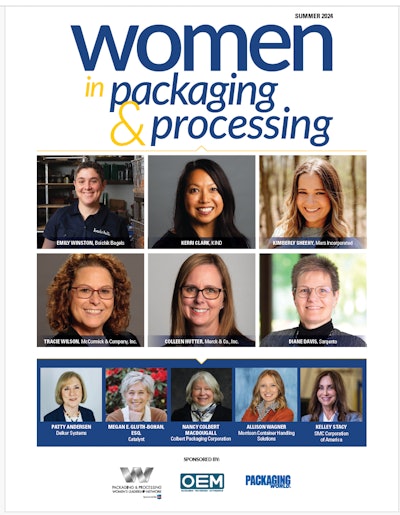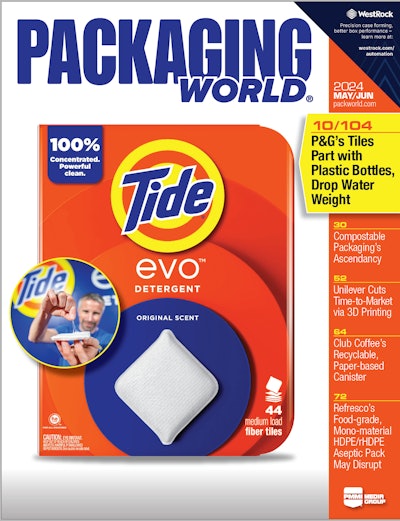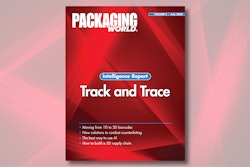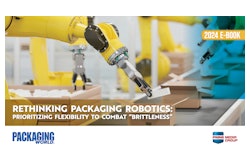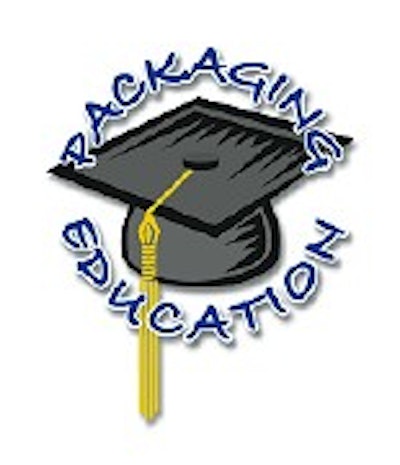
A recent post by John Henry, The Changeover Wizard, at PackNation.com, Packaging World's packaging community blogging site, provides food for thought on what he feels is missing from virtually all packaging education programs.
I have a gripe about packaging education and PackNation seems like a good place to get it off my chest.
I know some of the faculty at Michigan State University, and my good friend and fellow PackNation blogger Rosamari Feliu is a graduate. I am working with her to develop a packaging program at the Puerto Rico Polytechnic University. They all do excellent work and I have nothing negative to say about what any of them do.
I just think it is too narrowly focused.
The MSU program as well as the programs at other schools of packaging focus almost exclusively on the package. They look at package design, product protection, materials, testing and a host of other things. All very necessary, but they don't, by and large, look at how the package is produced.
I am a machine guy. Although I have learned a bit about package design and materials over the years, my first love and professional interest is in the machinery side. Nobody is teaching about this. There are a number of things I would like to see taught somewhere:
1) Packaging machine design. There are a lot of good, innovative, machine designers and builders out there. Some came from the operations side. "Lefty" Pearson, who founded Pearson Packaging, was packaging superintendent at a Spokane brewery when he decided that hand erecting six-pack carriers was inefficient. He developed the first automated erector in his garage. He is hardly alone, there are numerous similar stories.
Others come from a more formal engineering background. Still others came from completely unrelated fields, developing an idea and then finding that there was a need in packaging.
The problem is that there is no good way to institutionalize and formalize this knowledge. Sure, basic mechanical and electrical engineering principles apply to packaging machine design. But it is a specialized knowledge. We need to have a place people can go to learn this.
2) Packaging machine selection. Many people do not know how to select the proper machine for their application, For example, there are at least 10 major, different, architectures for liquid filling (for example, piston, fill to level, weight, etc.) There are usually several architectures that will work in a specific application. Usually only one architecture will be optimal. There needs to be courses where engineers can go to learn how to select the proper machinery.
3) Packaging line design. Another important and harder-than-it-looks, discipline. What are all the considerations that need to go into selecting the various components of the line and getting them to work well together?
4) Packaging line operation. How does one learn to run a packaging line? More importantly, how does one learn to run a packaging line well, that is, efficiently? This is something that must generally be learned from experience. What is the principle of operation of various machine types and models? It's not enough to be able to replace parts when worn or broken. Absent a good theoretical understanding of how machines work, it is difficult to troubleshoot and repair them.
5) Cross training. In my experience, many machine designers and builders do not have a deep understanding of how their machines are actually used in daily production. That's not a criticism. They build the machine and run it a few hours or days in the shop floor. Their service technicians then go out and fix the machines when they are broken. Perhaps the sales force will get to see the machine running in the field when they make a sales call. By and large, the designer/builder does not have the opportunity to see how the machine is really used. A good educational program might be able to help alleviate this.
To the best of my knowledge, in the entire United States there is only one school that really teaches machinery [see editor's note below]. That is Wisconsin Indianhead Technical College. They offer a two-year "Automated Packaging Technician" course. I have had the opportunity to talk to students and faculty as well as review the WITC syllabus, and it seems like an excellent program. It is designed to teach the mechanics and technicians of tomorrow. I would like to see a program that builds on some of these concepts and teaches the engineers of tomorrow about the machinery side of packaging.
It could go too far the other way. A program that taught only machinery would be incomplete as well. There always needs to be a balance and packaging engineers need to know about both things.
John Henry welcomes your feedback at PackNation, or at his Web site Quick Changeover, where you can subscribe to his free Quick Changeover Newsletter monthly newsletter.
EDITOR'S NOTE: Packaging World knows of several more institutions that offer studies in packaging machinery or closely-related topics. One of these is Alexandria Technical College, Alexandria, MN, which was the subject of Motion Control University, which appeared in PW September 2000.
The subject of package machinery in education was the topic of Training tomorrow’s technicians, published October 2004, which mentions a pharmaceutical packaging line established at Stevens Institute of Technology.
Dunwoody College of Technology, Minneapolis, MN, in its manufacturing curriculum, offers coursework in Automated Systems and Robotics. Dunwoody uses standards and curriculum set forth by Packaging Machinery Manufacturers Institute, Institute of Packaging Professionals, and Robotics Industry Association, and other national trade organizations.
The University of Cincinnati, Cincinnati, OH, offers Mechanical Engineering Technology coursework that includes classes in Motion control and Mechanical Design. Class projects in the Packaging Machinery technical elective have included “Packaging Machinery Cardboard Partition Feeder” and “Cam Driven Mechanism for Packaging Machinery."



